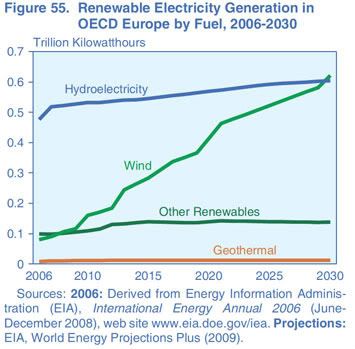Breakthrough Discoveries, Innovations and Renewable Energy – Guest-Blogger Kathy Heschelow
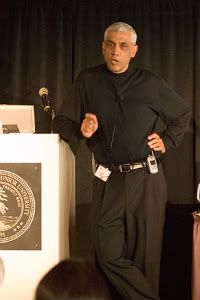
Those of us who follow the renewable energy world focus on the market applications of solar, wind, hydro and biomass — the politics and financial issues – and the statistics on what is being installed. But here, in a lesser-known world of R&D. scientists and researchers are working tirelessly on the next great discovery that could change the entire landscape. It’s a fascinating world – and one that is ramping up fast.
Science Will Move Renewable Energy Forward
ARPA-E, or Advanced Research Projects Agency-Energy is a fairly recent US government agency, established to drive R&D within the energy sector, and was formed in response to the U.S. losing its tech lead. The director, Arun Majumdar, said “We have a Sputnik moment right now. We are losing our technology leadership and we are falling behind. Our role is to take the high-risk, high-payoff approach to developing technologies… Business as usual and the pace of innovation is just not fast enough.” (Scientific American podcast. “Seeking Transformational Energy Technologies”, by David Biello. March 2010).
Massachusetts Institute of Technology (MIT) and a host of university researchers here and abroad are also busy on clean tech — and so are corporations. The National Energy Research Lab (NERL) plays a part, too. Some of the research comes from stimulus funding or separate ARPA-E funding, while some funding is from private sources and venture funds.
Just a few recent discoveries and innovative work in solar, wind and biomass include:
- A research team led by Australia’s Monash University announced in December 2009 a breakthrough in developing more efficient and viable solar cells. The have developed and produced dye-sensitized solar cells which increase energy generation performance threefold. Still in its infancy, the discovery may lead to a lower-costs and more efficient use of solar. (Asian News International, January 10, 2010).
- California Institute of Technology and the team of Harry Atwater have developed a flexible solar cell that can be built into clothing using an array of microwires embedded in clear flexible polymer. The wearable cells could charge gadgets while on the move, reported Asian News International on February 22, 2010. The application won’t be used only in clothing, either. Its tiny silicon wire uses one hundredth of the current silicon technology on the market. These tiny wires or whiskers of silicon are lined up and sprinkled with aluminum oxide particles, which help scatter incoming light so it moves around inside the array of whiskers. Atwater says up to 85 percent of usable sunlight is absorbed with this technique. “We’ve broken through what people thought was the absorption limit,” Atwater said. (Asian News International. “Carpet of silicon whiskers could make solar cells cheaper”. February 15, 2010).
- University of Texas researchers are using nanoparticle “inks” of tiny photovolatics to spray solar cells onto any surface. Currently this ink only converts 1% of sunlight to electricity, but researchers expect improvements with continued research and it may be efficient enough for market applications in three to five years.
- Professors at Tel Aviv University have found a new energy source from the common pea. As we know, plants generate useful energy with their own nanotechnology using light as the energy source. “My research aims to come close to achieving the energy production that plants can obtain when converting sun to sugars…”, says Professor Nelson of his project. They isolated the minute crystals of the PSI super complex from the pea plant, can illuminate the crystals and use them as small battery chargers or use them to form the core of a more efficient solar cell. (ScienceDaily. “New Energy Source for the Common Pea…March 4,2010).
- Professors at the University of Milan, University of Piedmonte-Orientale and Ludwig Maximilian University in Munich collaborated to identify a plant protein that optimizes light absorption during photosynthesis. This has relevance in capturing solar radiation as a renewable energy source. (Science Business. “Business Leads”, 24 Feb 2010).
- A flashlight-sized device that generates electricity has been developed by engineer Aaron LeMieux and will be coming to market at some time in the near future. He wanted to develop a small personal generator sourcing kinetic energy. He is working on a larger product with the same engineering that could turn waves from a body of water into electricity. (Forbes. “Green Tech, Green Jobs: The New Face of Cleveland”. March 2, 2010)
- Researchers at the University of Minnesota recently reported a breakthrough on improving electricity efficiency. They have created a system that moves electrons between proteins in cells. This gives insights on minimizing energy loss and improving energy efficiency. (University of Minnesota, March 2010).
- Chemists at the University of New Hampshire successfully synthesized the first-ever stable derivative of nonacene. Nonacene belongs to a class of organic semi-conductors called acenes, widely recognized as the best semi-conductors for electricity – but the technology has been unstable until now. This advance could help applications such as solar cells and could cut costs. (Asian News International. February 14, 2010).
- Dow Solar recently announced a new generation of solar panel rooftop shingles. Called building-integrated photovoltaic (BIPV) roof shingles, they wanted to address homeowner concerns on the aesthetic issue… some homeowners think rooftop solar panels are too ugly, they say. SRS Energy has created solar panels that look like standard clay roof tiles.
- The Indo-Asian News Service reported that solar rooftop storage batteries may soon power homes in India. The government is in talks with MIT (Massachusetts Institute of Technology) to use their 1 MW-capacity prototype. The storage battery can also be charged with wind power. Both sun and wind are abundant in many parts of India. India will fund the pilot program.
- Scientists at Stanford and IBM announced in early March 2010 a breakthrough on plastics and plastic recycling. IBM says that many plastic bottles are being recycled now but can only be recycled once. Most bottles made from second-generation recycled plastic have to be sent to landfills. However, their team found a way for plastics to become endlessly recyclable. The team used organic catalysts for a new way to produce but also breakdown plastic polymers.
- IBM is expanding into alternative energy by unveiling a solar cell that is apparently 40 percent more efficient than others. They use common elements rather than rare ones to keep costs down. (Popular Science. February 11, 2010).
- A team in London at Imperial College introduced a degradable plastic polymer made from sugars in February 2010.
- Wood waste can be used in making biofuels but until now, complex sugars found in wood are not naturally digestible by micro-organisms that convert the waste, and the process has given rise to harmful by-products. Delft University researchers in The Netherlands discovered that a specific bacteria breaks down these harmful by-products produced when sugars are released from wood waste. This discovery could change all that. (Delft University of Technology, March 12, 2010. Reviewed in ScienceDaily. “Production of Chemicals from Wood Waste Made More Environmentally-Friendly and Cheaper”.
- Natural gas created from algae is another new invention. The Department of Energy’s Pacific Northwest National Laboratory is bringing to market a method for converting algae to renewable natural gas under a license between Genifuel and Battelle. The process is called catalystic hydrothermal gasification. Apparently 99 percent of the biomass is gasified, and existing natural gas pipelines can deliver the fuel. This could be a future boost for producing electricity from renewable sources.
More on this tomorrow.

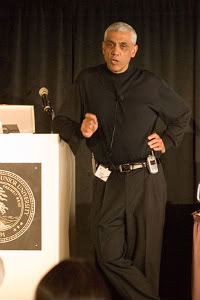
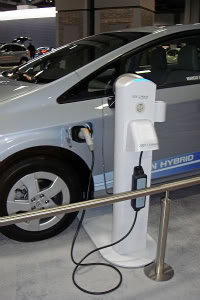
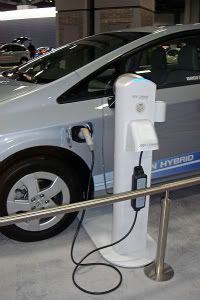 Transportation is a major cause of carbon emissions, so much so that it accounts to the north of 20 percent. The US, being at the forefront of industrial development, has its fair share in overall emissions. But the federal government in the states is pushing vehicle electrification in its bid to reduce dependence on foreign oil. President Obama has set a target of one million electric and plug-in hybrid vehicles on the road in the United States by 2015.
Transportation is a major cause of carbon emissions, so much so that it accounts to the north of 20 percent. The US, being at the forefront of industrial development, has its fair share in overall emissions. But the federal government in the states is pushing vehicle electrification in its bid to reduce dependence on foreign oil. President Obama has set a target of one million electric and plug-in hybrid vehicles on the road in the United States by 2015.
 A number of people have commented on the post of frequent blogger Dan C. writes:
A number of people have commented on the post of frequent blogger Dan C. writes: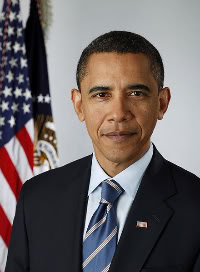
 Yesterday’s announcement by Obama that he’s opening up East and Gulf coasts to offshore drilling is very good news, insofar as it will drive increased visibility of the imperatives for renewable energy. Coming on the heels of Obama’s announcement of federal loan guarantees for new nuclear power units, this now sets the stage for a strong administration push for climate change legislation by the fall — not that it will be called that, given how politically-charged that phrase has become. Obama is giving more moderate Republicans, especially SC Sen. Lindsey Graham, what they want and need to support a bill that is expected to include, for the first time ever, some sort of cap on carbon dioxide emissions. Exactly what that cap will look like and which companies and industries it will impact most will be the source of a lot of political haggling in the weeks and months to come.
Yesterday’s announcement by Obama that he’s opening up East and Gulf coasts to offshore drilling is very good news, insofar as it will drive increased visibility of the imperatives for renewable energy. Coming on the heels of Obama’s announcement of federal loan guarantees for new nuclear power units, this now sets the stage for a strong administration push for climate change legislation by the fall — not that it will be called that, given how politically-charged that phrase has become. Obama is giving more moderate Republicans, especially SC Sen. Lindsey Graham, what they want and need to support a bill that is expected to include, for the first time ever, some sort of cap on carbon dioxide emissions. Exactly what that cap will look like and which companies and industries it will impact most will be the source of a lot of political haggling in the weeks and months to come. As suggested yesterday, here is a continuation.
As suggested yesterday, here is a continuation.